The sea coconut (Manicaria saccifera), not to be confused with the true coconut (Cocos nucifera), is a common drift seed.
I recently captured multiple images of this kid-pleasing aquatic rambler at a local beach.
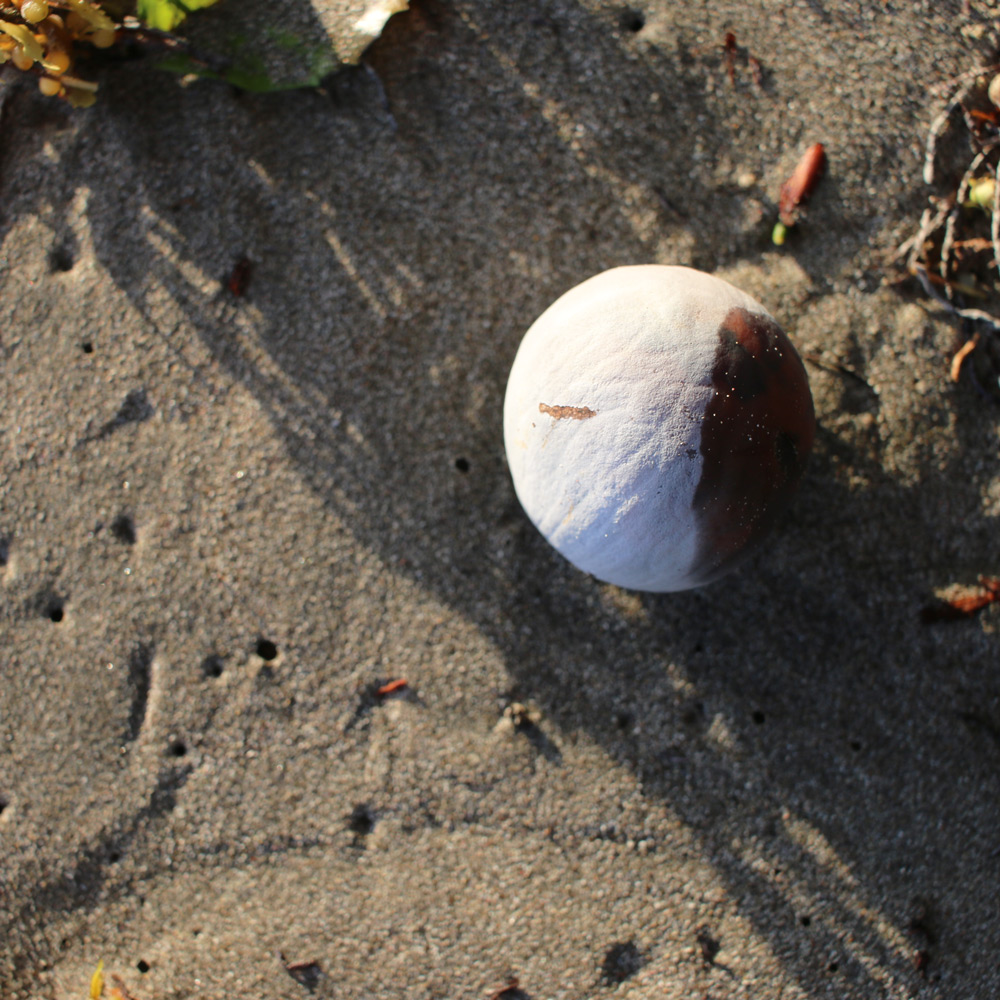
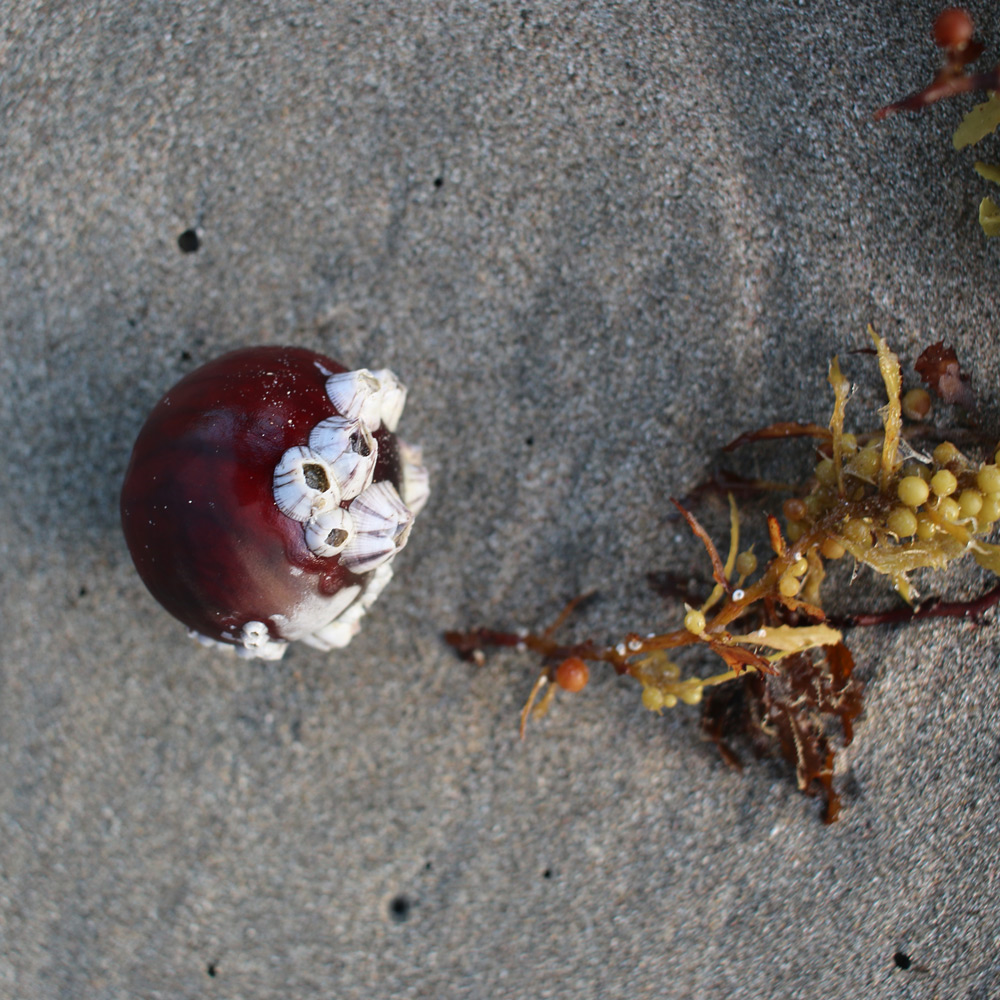
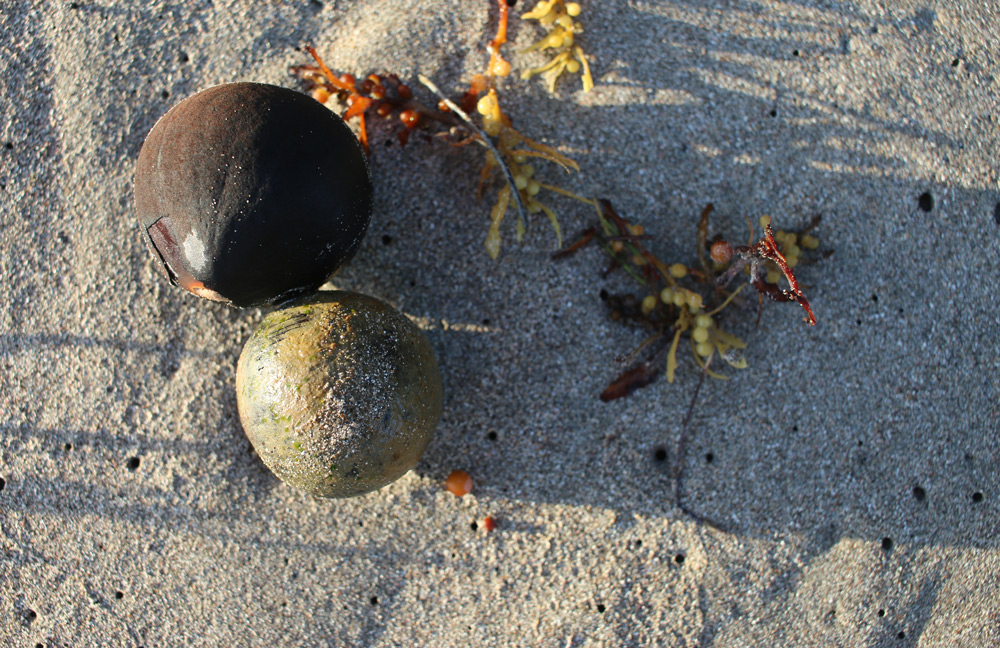
While wandering the shoreline, I also saw this crazy-looking drift seed and wondered what it was:
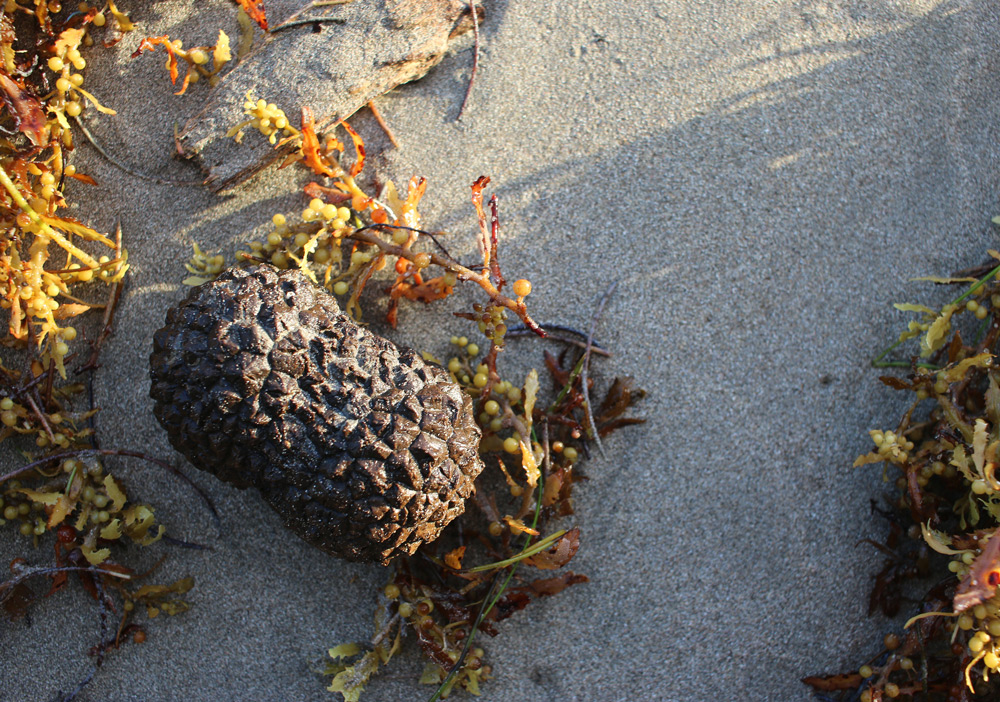
I did some research and discovered that spiky capsule is the container from which sea coconuts are released!
Check out this old illustration:

I should have just busted one open; however, I failed to bring any home with me. Next time I see some at the beach I’ll take some home to open up.
Back in Florida I almost always found the spherical seeds without any accompanying pod. One time I found a single, half-broken pod but didn’t connect that with the multi-lobed things washing up on our local beach.
Here are some of the seeds I found back in Florida, including a sea coconut with most of a shell on it:
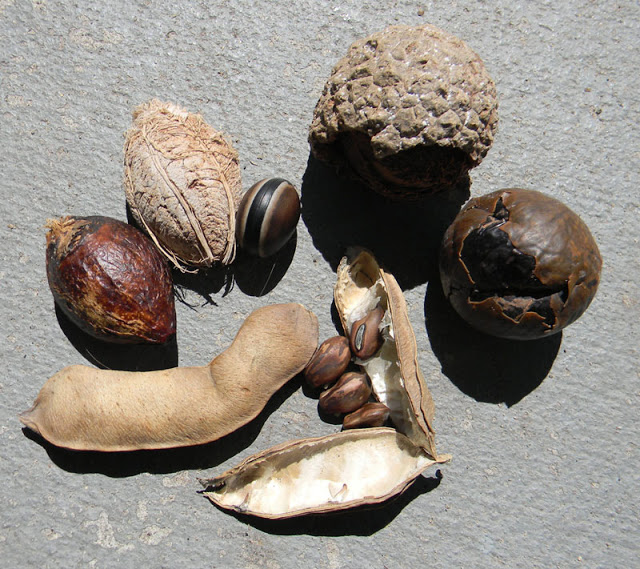
We must be much closer to where the trees grow so the action of the surf hasn’t opened all their shells yet.
The bumpy things are everywhere.
I have a fascination with sea beans, as I’ve revealed in previous posts.
I’ve even painted their portraits.
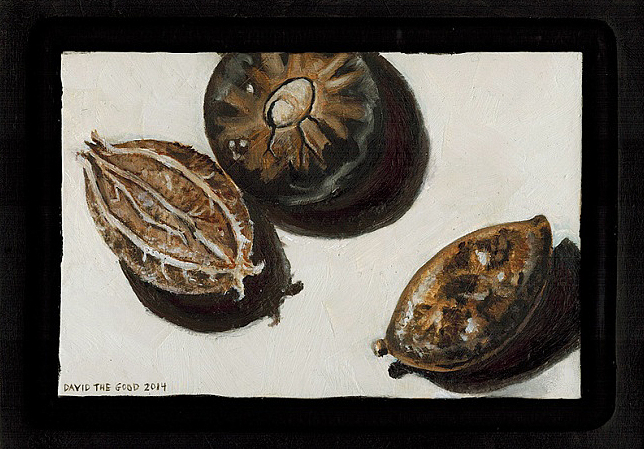
I’ve germinated some of them, too.
Sometimes they germinate right on the beach, like this tropical almond:
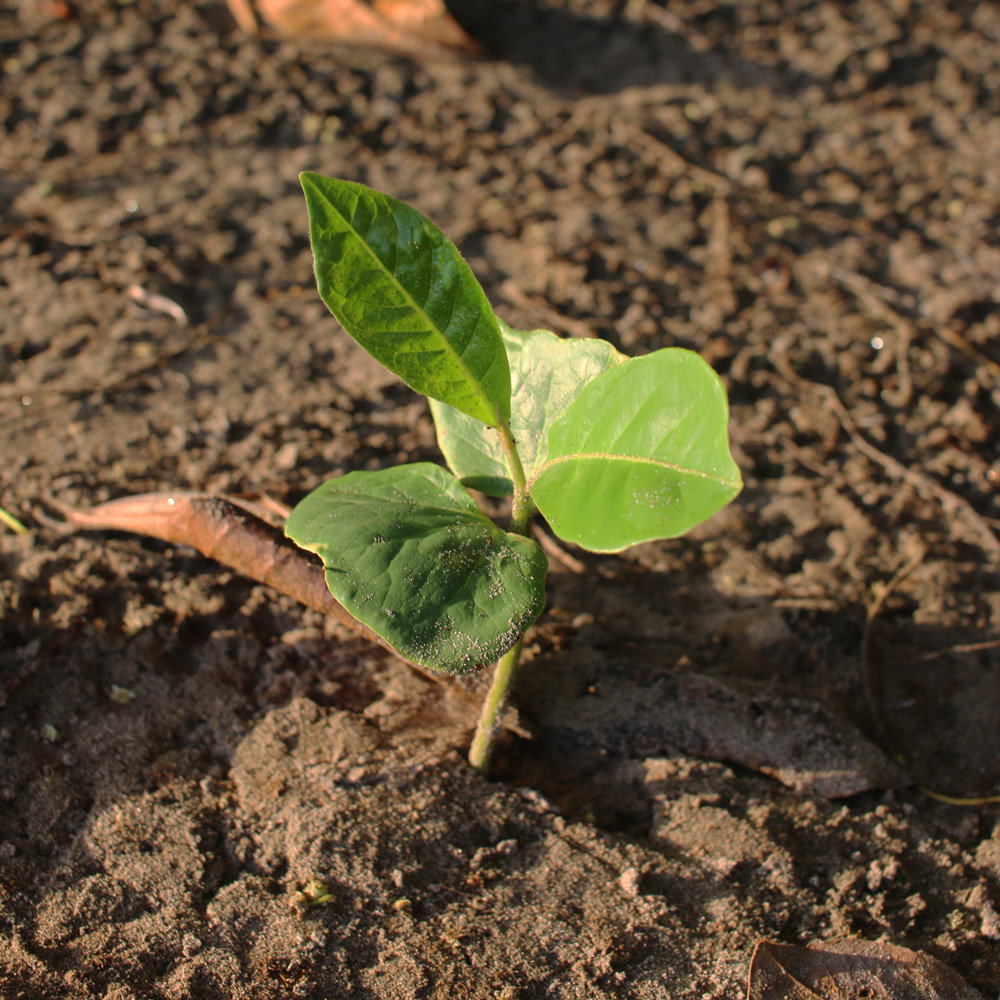
The tropical almond tree in The Great South Florida Food Forest Project was that size when I planted it.
Now it’s a beautiful, big and productive tree.
If you’re interested in learning more about drift seeds and sea beans, you’ll enjoy this page.
I love the beach. The sea life, the birds, the surf, the driftwood and the strange botanical debris always washing up from strange shores.
Anyone else collect sea beans?


4 comments
I WANT TO GROW A SEA COCONUT THE ROUND BALL KEEP LOOKING GOT ANY IDEAS ????? PLEASE
The ones that wash up on the shore are likely all dead. I’m not sure where you’d find one that would grow.
Good morning from Ft. Lauderdale beach! Thank you for your website! I found a few, mysterious, perfectly round, solid black objects on beach surf this morning, with pointy clams(?) growing on them. Never seen them before. From your site they look like sea coconuts. I honestly couldn’t tell if they were flora or fauna. Thank you for solving my mystery.
Nina
You bet – thank you, Nina.
Comments are closed.